Lawn Fertilizer Tips: When And How To Apply Lawn Fertilizer


Some of our fondest memories are connected to our lawns. It's a great place to roughhouse with kids and dogs, entertain guests, or simply sit and enjoy life. To grow a beautiful lawn that you'll be proud of, you need to develop a proper maintenance schedule which includes fertilization. Read on to find out about feeding lawns so yours will always look its best.
When to Put Fertilizer on Lawns
All lawns need fertilizer in early spring when the grass begins to green up. Your fertilization schedule for the rest of the season depends on the type of grass in your lawn, the type of fertilizer you use, and your climate. Most lawn seed is a mixture of several different types of grasses, and both spring and fall fertilization are appropriate. The label on a bag of lawn fertilizer will recommend a schedule based on the type of fertilizer it contains. The label is your best guide to how often to apply the product and how much to use. As long as you don't overdo it and avoid fertilizing in the hottest part of summer, your lawn should thrive.
How to Apply Lawn Fertilizer
There are several ways to apply lawn fertilizer. Using a spreader provides more even coverage than fertilizing by hand. Hand fertilizing often results in burns where the fertilizer is concentrated and pale areas that don't get as much fertilizer as they should. Broadcast or rotary spreaders are easy to use and don't cause striping like drop spreaders. The advantage to drop spreaders is that there is no chance of overthrow getting fertilizer on streets, sidewalks, or driveways. With a drop spreader, you have to make two trips over the lawn at right angles. For example, if you make your first trip over the lawn in a north-south direction, the second trip should run east to west. After applying the fertilizer, water the lawn thoroughly. Watering rinses the fertilizer off the grass blades so that they won't burn, and it allows the fertilizer to sink down into the soil so it can get to work. Keep kids and pets off the lawn for the amount of time recommended on the label, which is usually 24 to 48 hours.
Types of Fertilizer to Use on Lawns
Here are the basic types of fertilizer to use on lawns: Slow-release - You don't have to use slow-release fertilizers as often, but they are usually more expensive. Fast-release - You get quick results with a fast-release fertilizer, but you have to apply them in smaller amounts and more frequently. You can burn your lawn with a fast-release fertilizer if you use too much. Weed and feed - Try to identify your weeds before using a weed and feed product and make sure your weed is listed on the product label. Take special care around trees, shrubs, and garden plants. Organic materials such as compost and manure - The essential nutrients aren't as concentrated in these types of materials, so you have to use a lot. Compost or dry manure before applying it to the lawn, and be aware that some manures, particularly horse manure, may contain weed seeds. Liquid fertilizers - These aren't recommended because they are hard to apply evenly and require frequent applications.
Additional Lawn Fertilizer Tips
- Water the lawn a few days before you fertilize to make sure it isn't suffering from drought stress.
- Make sure the grass blades are completely dry when you fertilize the lawn to avoid burns.
- Fill the spreader on the driveway or on cement so that you can sweep up spills easily.
Gardening tips, videos, info and more delivered right to your inbox!
Sign up for the Gardening Know How newsletter today and receive a free download of our most popular eBook "How to Grow Delicious Tomatoes."

Jackie Carroll has written over 500 articles for Gardening Know How on a wide range of topics.
-
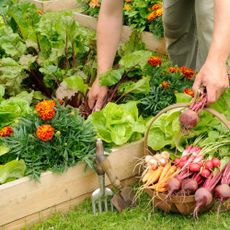 5 Fast-Growing Intercrops To Max Out Your Vegetable Garden
5 Fast-Growing Intercrops To Max Out Your Vegetable GardenEven the smallest gardens can have mighty growing potential. These delicious intercrops are quick and easy to grow and will make your veg plot more productive.
By Amy Grant
-
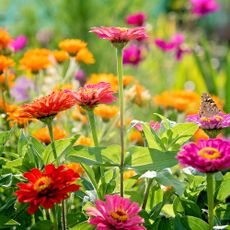 9 Annual Flowers That Bloom All Summer Long
9 Annual Flowers That Bloom All Summer LongThis curated pick of show-stopping annuals will fill out your garden beds, containers, and hanging baskets until the end of summer.
By Amy Grant
-
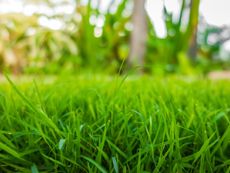 Sustainable Turf Species For A Greener Lawn
Sustainable Turf Species For A Greener LawnClick here for some of the most sustainable types of turf grass you can grow for an eco-friendly lawn.
By Bonnie L. Grant
-
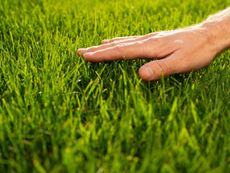 How To Grow A Sustainable Lawn
How To Grow A Sustainable LawnAdjust your thinking about a perfect green lawn and consider more sustainable methods. Click here to learn how.
By Mary Ellen Ellis
-
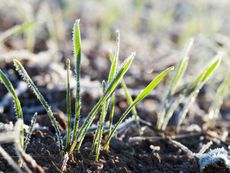 Will Frost Kill Grass Seed And How To Help New Turf Survive
Will Frost Kill Grass Seed And How To Help New Turf SurviveLearn how to help your newly sown grass survive frost and freezing weather.
By Amy Grant
-
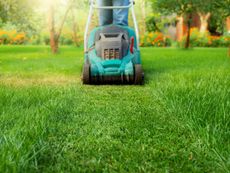 Lawn Problems That Aren’t Really Problems
Lawn Problems That Aren’t Really ProblemsYour lawn may not require as much work as you think. Learn which common problems aren’t really problems.
By Teo Spengler
-
 Why A Manual Push Mower Is Good For You And The Environment
Why A Manual Push Mower Is Good For You And The EnvironmentReel mowers are making a comeback, but why? Click here to learn about reel mower pros and cons.
By Amy Grant
-
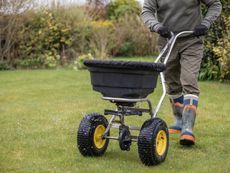 Fertilize Grass In Fall For A Lush Lawn In Spring
Fertilize Grass In Fall For A Lush Lawn In SpringFor everything you need to know about fertilizing your lawn in the fall, click here.
By Susan Albert
-
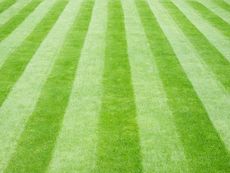 Tips For Mowing Stripes In Lawn
Tips For Mowing Stripes In LawnWouldn’t it be great to have stripes in your lawn like a sports field? Learn how here.
By Susan Albert
-
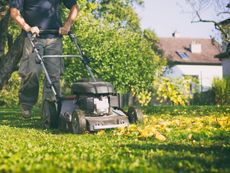 Late Summer Lawn Care Checklist
Late Summer Lawn Care ChecklistPlan to do some late summer care and maintenance of your lawn so it will be healthy and beautiful in the spring. Here are some tips.
By Laura Miller